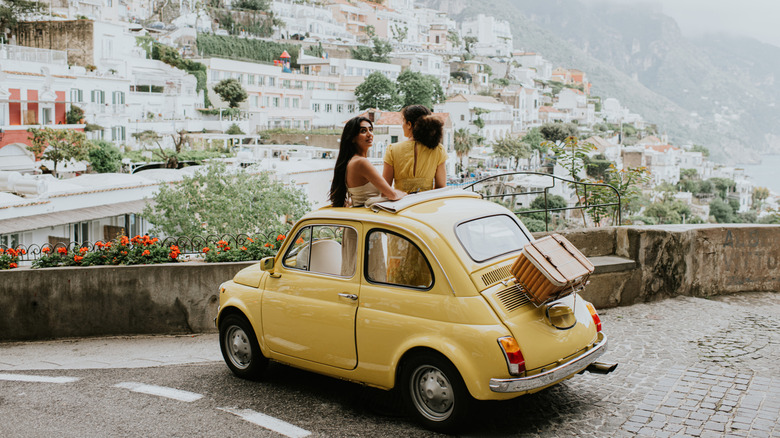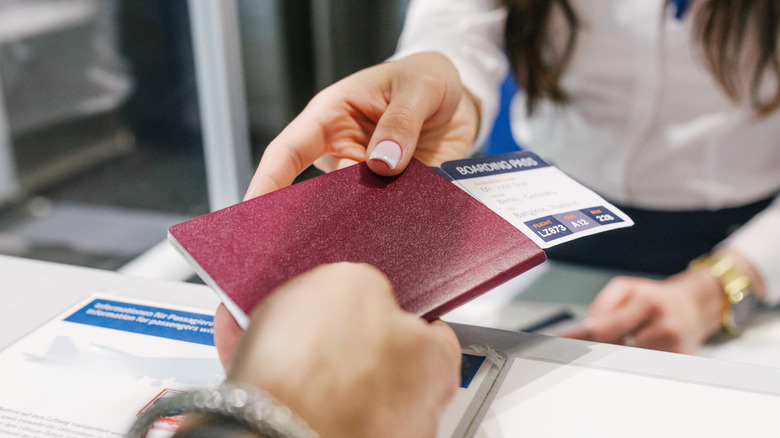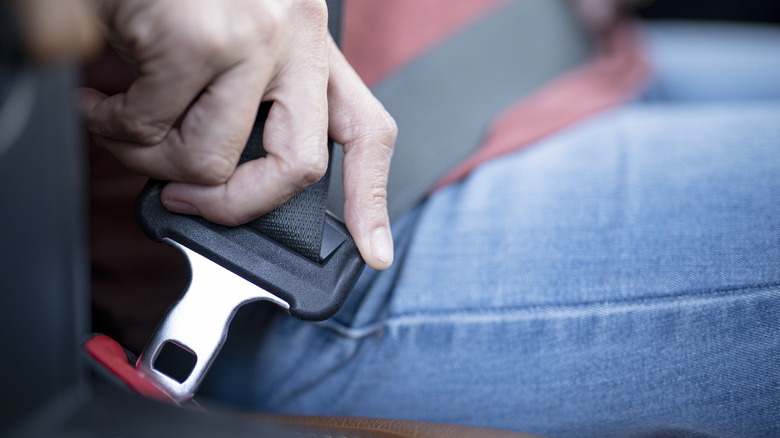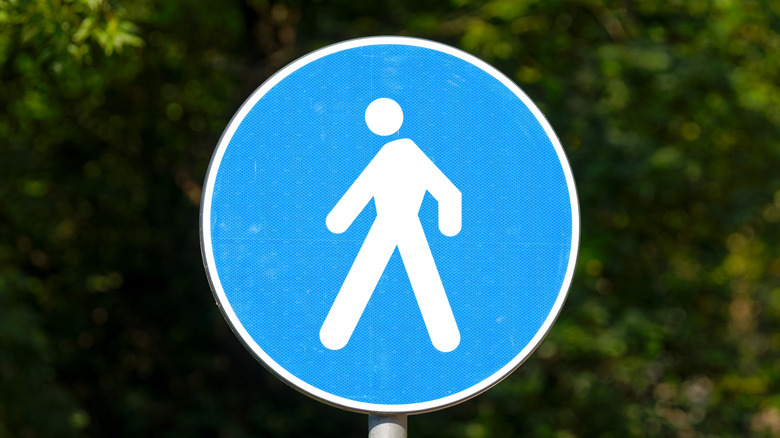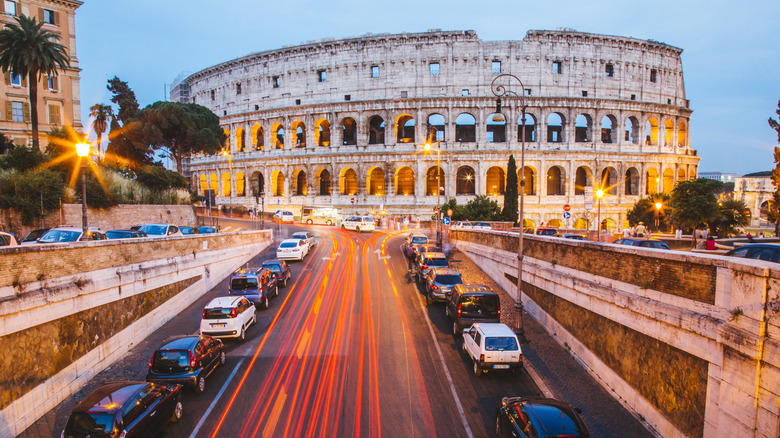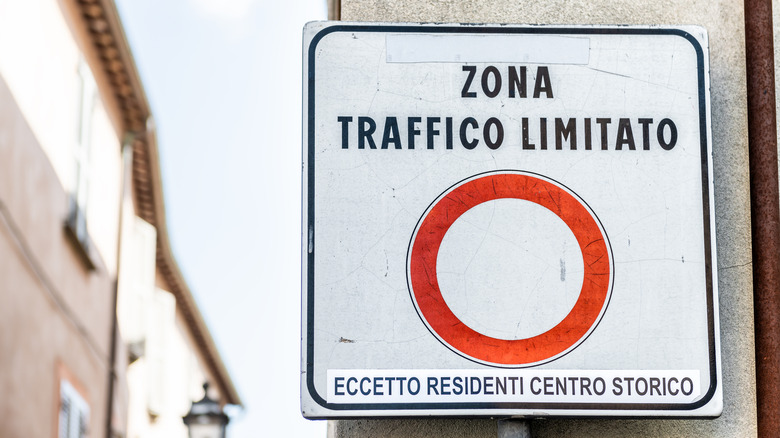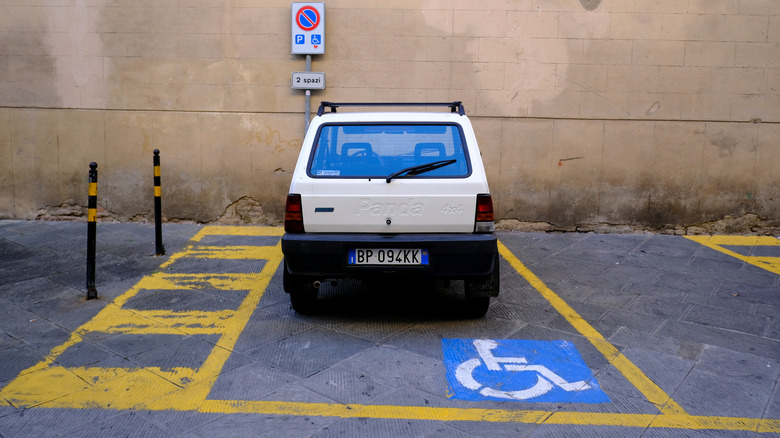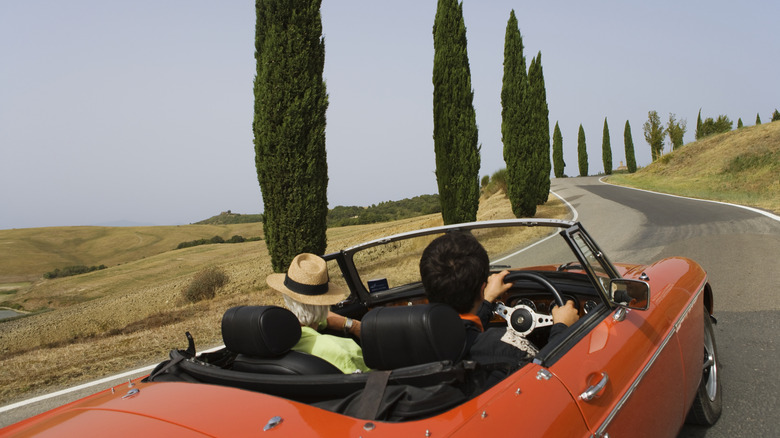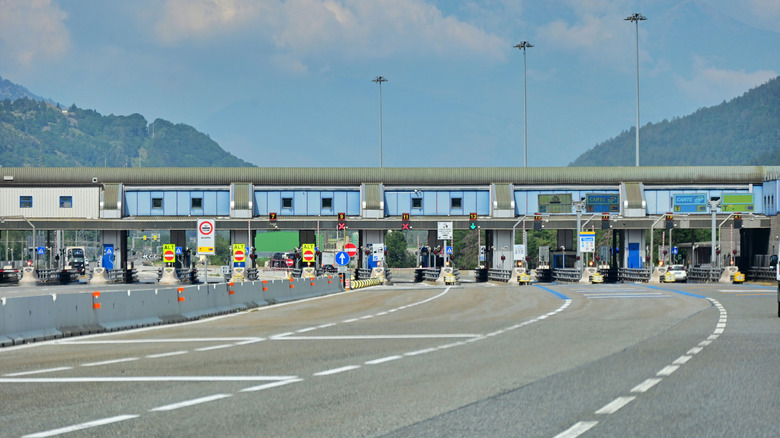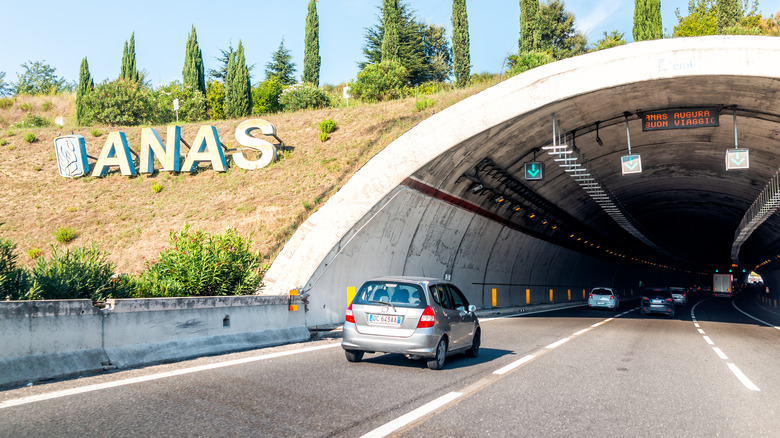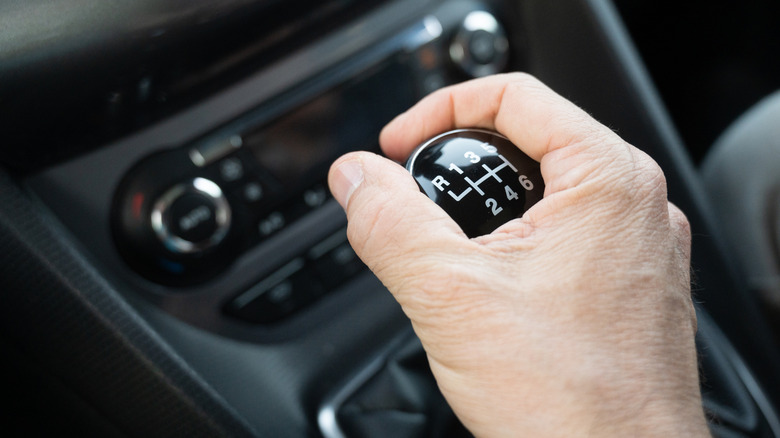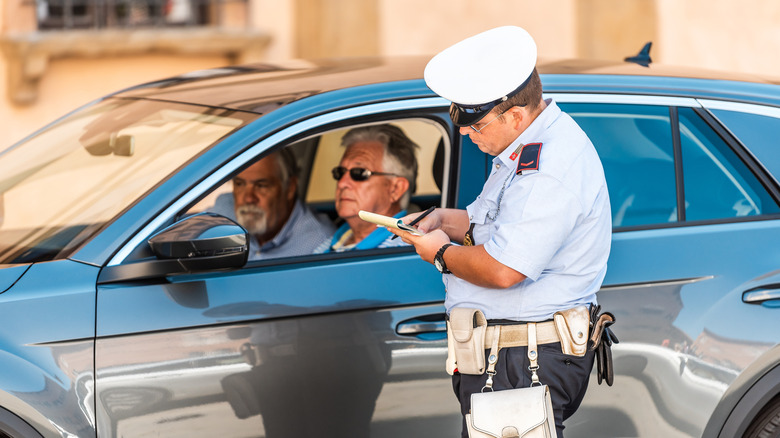An Easy-To-Digest Guide On What You Need To Know Before Driving In Italy As A Tourist
Italy has something of a reputation for its intense driving scene. While it is rather stereotypical to say that virtually all rules of the road are ignored in the country, the driving environments you could experience might lead you to believe that there is some truth to the characterization. Of course, for those who live in Italy, understanding how to drive in cities and towns that were never designed for cars is second hand. However, things are completely different for visitors. It's easy for travelers to fall into tourist traps in Italy. But one place you definitely don't want to be caught unaware is on the road.
Visitors need to understand the essentials of Italian driving. There are a lot of rules and regulations you must follow to ensure you drive safely, efficiently, and legally during your vacation. Of course, it can seem overwhelming to try and figure everything out on your own. Thus, it's helpful to have the key points distilled for you.
To safely get from Point A to Point B anywhere on the Italian peninsula, familiarize yourself with the driving best practices. While you won't be plundering through Turin in Mini Coopers, you'll certainly feel a lot more confident about driving in Italy when you're finished. While there are many rules to follow and stressful situations, this can still be a wonderfully rewarding experience. You'll get to see some of the best spots in the country, and enjoy some of the most scenic roadways in the world.
Make sure you have the required documentation
Italy has several requirements when it comes to Americans renting cars. The driving age in the country is 18, though companies will not rent to someone under 21. According to the Automobile Club of Italy, you will need to have a valid U.S. driver's license, an international driving permit (IDP), your passport, proof of registration of the rental vehicle, and an insurance policy for the rental. The latter is not an option when it comes to foreigners renting cars in Italy. Auto Europe states that a collision damage waiver and theft protection are required by Italian law.
You'll have to procure your IDP, which will contain all of your information in Italian in order for better translation, before leaving the states. The United States Italian Embassy lists it as a requirement, and you can apply for one through AAA. Having an IDP alongside your standard U.S. license ensures that you are legally allowed to drive in Italy. You'll likely have to show your IDP at the rental agency.
Be aware of safety requirements
While driving in the U.S., it can be easy to take the notion of safety for granted. You may be comfortable on the local roadways after many years of haunting the same routes. Additionally, some states, like New Hampshire, do not require adults to wear motorcycle helmets or seat belts. In Italy, or any EU country, you need to use a seat belt at all times — provided you drive a car that has them. If you end up cruising in an old 1950s Fiat 500 with no seat belts, you needn't worry.
There are other safety requirements you must adhere to, regardless of the age or type of vehicle. Per the Automobile Club of Italy, all cars should have high visibility braces or reflective vests and traffic triangles to use in case of an emergency. Children under 1.5 meters (4.9 feet) tall are required to sit in booster seats. Additionally, if you're riding an electric scooter or motorcycle, helmets are also a must. According to the European Road Safety Observatory (pdf), Italy had some of the highest motorcycle fatality rates in the EU between 2018 and 2020, so don't underestimate the need for protective headwear.
Know your right of way
A road trip to multiple destinations in Italy is a great idea for a honeymoon, but you'll need to read up on the driving rules first. While the country is familiar, as they drive on the same side of the road as the states, there are still different rights of way to take into consideration. This is where things can get tricky.
Generally speaking, you should yield to any traffic on the right at intersections. This means that if you stop at a two-way junction at the entrance to a gated town and someone on your right is looking to turn at the intersection, you yield to them first and vice versa. However, it is more important that you, as the traveler, yield this way. It is highly unlikely that a native Italian will yield to anyone.
Another thing that you are very likely to encounter in Italy are roundabouts, called rotaries in some parts of the U.S. In the same fashion, you yield to the cars already in the roundabout until you see an opening to make your entrance. It's also important to yield to pedestrians crossing the street (even if they are jaywalking) in congested city centers. Further, it is illegal to turn right at a red light in Italy. So, no California rolls in Florence.
Road conditions in city centers are not great
Italy is an old country. While some cities have become more driver friendly with wider, modernized roads, there are still plenty of places on the boot that were not built with automobiles in mind. Many, like the charming Tuscan city of Siena, were constructed on ancient or medieval frameworks, resulting in a veritable spider web of streets. So, if you ever drive in or near a historic city center, especially one that's not as heavy on tourists, you'll be in for some frustration.
This is well-illustrated in an episode of "Top Gear" during which Clarkson, Hammond, and May had to navigate their way out of another Tuscan city: Lucca (You can watch it on YouTube for a good laugh). The maze-like cobblestone streets, thin lanes, confusing road signs, pedestrians, and buzzing scooters made navigation nearly impossible. While not every town is like Siena or Lucca, there are still plenty of cities throughout Italy that are difficult to navigate and lack car-friendly streets. GPS can help, but you shouldn't rely on it. Just keep a level head and don't be afraid to ask for assistance if you need it. A good map should come in handy too.
Beware of ZTLs
On top of being congested and non-driver friendly, there are yet even more ways to get your driving wrong in a traditional Italian city center. Aside from the endless one-way streets you'll have to battle, you'll also encounter places in metro areas where you are not allowed to drive known as ZTLs. Zona Traffico Limitato is as straightforward as it sounds, even for those not fluent in Italian. Standing for Limited Traffic Zone, you could easily find yourself in a bit of bother with local law enforcement if you do not heed the sign for one of these areas.
Noted by a large red circle, a ZTL is totally off-limits to any kind of motorized vehicle during specified hours. This includes cars, scooters, and motorcycles, per The European Consumer Centre. Of the many transit mistakes you can make in Italy, driving in a ZTL is one of the biggest. The only vehicles that are allowed into a ZTL after hours are cars with the appropriate registration. In other words, you have to live or work in the area to drive in it. Any unregistered drivers caught in a ZTL during non-traffic hours could face a hefty fine.
Don't drink and drive
While the general attitude towards alcohol is much more relaxed in Italy than it is in the United States, that does not mean that there are no limits. Wine and cocktails are typically drunk slowly and with food, meaning that many Italians will never get their blood alcohol levels high enough to be considered drunk. However, there are still laws to follow concerning the amount of alcohol you can legally consume before getting behind the wheel.
According to the Automobile Club of Italy, different levels of blood alcohol can result in legal action by the police. For brand new drivers, the law is very strict, with a set limit of absolute zero. The standard legal limit alcohol level you can have in Italy is 0.5 grams per liter of blood, per the European Transport Safety Council. That usually gets you a minor slap on the wrist. Going above that amount is where you can get in serious trouble.
If your blood alcohol level reaches over 1.5 grams per liter, you're in for even greater problems. 2022 figures indicate you could face upwards of a €6,000 fine and potentially time in jail for what the country views as a criminal offense. So, keep it cool and don't over do it when you're traveling in Italian wine country, okay?
Learn the different colors when it comes to parking
While it's a difficult task in any metropolitan area, parking in Italy can be particularly challenging. If there isn't a sign that says not to park somewhere, you can usually squeeze yourself into a spot on the side of the road. However, if you want to use a formal parking space, you'll need to know what the colors mean.
Italy uses a color-coded system to delineate the types of parking available in an area. A spot bordered by white lines indicates free or residential parking. You can use these spots without any issue so long as they're not marked for residential purposes, as doing so without a permit will get you fined. Yellow bordered parking spaces are for vehicles with special permissions, such as trucks, loading docks, or accessible spots. Permits are typically also required for these.
Parking spots bordered in blue stand for paid parking, which you can use if you've purchased a ticket or what's called a parking disc from a local drug store. Blue zones with a disc indicator are timed lots of anywhere between 15 minutes to two hours. To park there, simply display your disc with the time you arrived on your dash and get back before it expires.
Keep to the speed limit (even if the locals don't)
Yes, it's true. Many Italians like to drive fast. There's a reason the nation is the home to several major road races and the likes of Maserati, Lamborghini, and, of course, Ferrari. The locals have long held an appreciation for zippy vehicles. And though they may drive like speed demons, this does not mean that you should.
It is always best for visiting drivers to keep to the posted speed limit. In cities and towns, it is 50 km/h (30 mph), while on smaller and larger highways it goes upwards from 90 km/h (55 mph) to 130 km/h (80 mph), according to Europcar. You can keep a little cheat sheet with you for metric to imperial conversions, but most cars in Europe will be in km/h anyway.
Be wary of local drivers, who will likely honk and yell at you for going the posted speed limit. They might consider it rude because you're slowing them down. However, as a tourist, it's best to simply put up with this. The last thing you want on vacation is to come face-to-face with law enforcement over a speeding violation in a crowded city center (let alone having to pay the resulting fine).
Have cash on hand for tolls
Italy's highways, or autostrade, are a system of roadways that can easily get you across the country. They connect with all of the major cities, and are relatively straightforward in terms of design layout. Much like some highways in the United States, the autostrade are toll roads, meaning that you'll take a ticket (if you don't have a Telepass) when you enter and pay money at a toll booth when exiting. The collection methods for these booths vary depending on the autostrada you drive on.
Signs will typically indicate whether or not the toll lane will accept a Telepass, credit or debit card, contactless payment via your mobile device, or cash collected by an operator or a machine. While paying with a credit card might sound like the easiest option, understand that there is always a chance the machine might not be working. Therefore, you need to keep some cash on hand to pay your toll, as this offers the greatest reliability. Thankfully, if you somehow end up on an autostrada without a way to cover the fee, you can obtain a printout to use to pay it online later.
Plan long distance drives for Sundays
While you might think that Italy not allowing trucks over a certain weight to travel on Sundays could stem from long-standing religious traditions of the Catholic Church, it is actually a broad sweeping environmental policy. As these larger vehicles are typically powered by diesel fuel and have more emissions than regular cars, restricting their travel is part of Europe's effort to be more sustainable and cut down on air pollution.
The truck restrictions also happen to be great if you want to make a long distance trek down the autostrade. The fact that there are no trucks on the roadways on Sundays means that the highways are going to be far less busy. So, if part of your journey will span several miles, say from Venice to Florence, then go on a Sunday to avoid truck traffic.
Unfortunately, this doesn't translate to back roads and coastal routes. These often are much more crowded on the weekends because that's when the majority of people, including locals, tend to travel. Plus, the backroads and coastal routes are far more twisty and difficult than the highways. So, if you're visiting one of the Amalfi Coast's many amazing breaches, you're likely to hit some traffic.
Stick shift is still a thing in Italy
Depending on your age, you may have learned how to operate a manual transmission when you first were taught how to drive. While many boomers likely still know how to work a stick shift, lots of millennials and Gen Zers do not. However, there may be more young stick shift drivers than you think. According to data shared by CarMax in 2023, manual transmission sales are on the rise.
While you can always choose to rent a car with an automatic transmission, understand that you are far more likely to come across the manual variety during your Italy vacation. Driving stick is the preferred method there. Most say it's because cruising around in an automatic is dull, and that the stick gives you far more control and power on those twisty roads.
Learning to drive stick shift can be intimidating, but it is nothing you can't pick up in a few hours in an empty parking lot. Getting out of first gear and down-shifting are the trickiest parts, but once you've driven stick for a few weeks out on the road, you should have no problem. Taking the time to learn is a lot better than stalling your car in the middle of Rome.
Be prepared to pay a ticket on the spot
Even if you follow every rule on this list, there is still a chance that you might get pulled over and ticketed by the local police (or get flagged by a traffic control camera). If this happens, you may have multiple options for paying the resulting fine. The U.S. Italian Embassy states that a debt collector may could the debt from the Italian authorities and reach out to your rental car company, which will provide it with your contact information. You would then receive a notice regarding the fee, including instructions for settling it, at the address you provided back home.
Yet, depending on the circumstances of the incident, the U.S. State Department also says that law enforcement officials might expect you to pay the fine in local currency on the spot. Failure to do this could result in the confiscation of your vehicle. So, as with tolls, you'll want to make sure you have a decent amount of cash on hand in case of an emergency. Note that traffic violation fines vary wildly in Italy, with speeding tickets coming in at anywhere from under $100 to thousands depending on how fast you were going.
